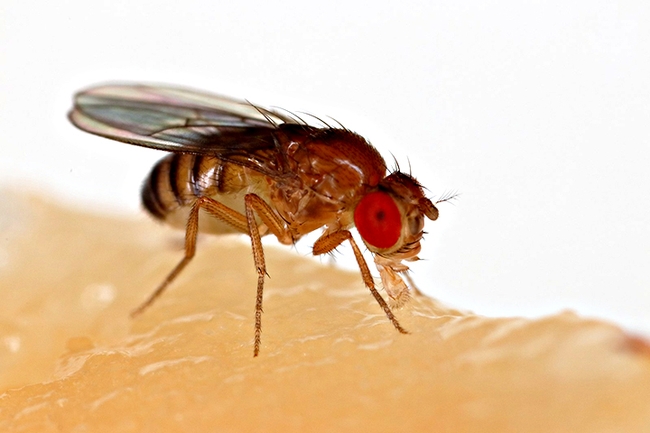
It's long been a model organism for biological research in such fields as genetics, physiology, microbial pathogenesis and life history evolution.
And now, a New York scientist is studying the circadian and homeostatic regulation of sleep in these fruit flies.
Orie Shafer, professor of biology and cognitive neuroscience, City University of New York, will share his research on Monday, Feb. 5 in a seminar hosted by the UC Davis Department of Entomology and Nematology.
Shafer will discuss "Circadian and Homeostatic Regulation of Fly Sleep" at 4:10 p.m. in Room 122 of Briggs Hall, and also on Zoom. The Zoom link:
https://ucdavis.zoom.us/j/95882849672.
"Sleep-like states are ubiquitous in the animal kingdom and are regulated by two distinct forms of regulation, circadian and homeostatic," Shafer says in his abstract. "Homeostatic mechanisms promote increases in sleep pressure during prolonged wakefulness. Circadian mechanisms determine the likelihood of sleep, increasing or decreasing its probability across the day. Though the molecular and neural mechanisms of circadian timekeeping are relatively well-understood, much less is known about the mechanistic basis of sleep homeostasis. The fly Drosophila melanogaster is a powerful model organism for the studying of sleep regulation. In this talk I will describe recent work from my lab examining how circadian timekeeping and sleep homeostasis operate in this fly and how these two regulatory processes converge to produce the proper timing and amount of sleep."
Shafer will be introduced by molecular geneticist and physiologist Joanna Chiu, professor and chair of the department. He received his doctorate in biology from the University of Washington, and served as a postdoctoral researcher at Washington University School of Medicine, St. Louis.
In a YouTube video with Abhilash Lakshman on "Circadian and Homeostatic Regulation of Sleep in an Insect Brain," Shafer points out that "Sleep is largely controlled by two processes--a circadian clock that regulates its timing and a homeostat that regulates the drive to sleep." In the video, he discusses some of the fundamental biology involved in human and fly sleep. Lakshman describes "an elegant two process model in which the circadian and homeostatic components act independently, bringing theory and experiment together for a new understanding of fly sleep."
D. melanogaster feeds on rotting fruit and fermenting beverages, and is often found not only in orchards, but in kitchens and bars.
Charles W. Woodworth proposed in 1901 that D. melanogasterbe used as a model organism. "As of 2017, six Nobel Prizes have been awarded to drosophilists for their work using the insect," according to Wikipedia. "D. melanogaster is typically used in research owing to its rapid life cycle, relatively simple genetics with only four pairs of chromosomes, and large number of offspring per generation. It was originally an African species, with all non-African lineages having a common origin. Its geographic range includes all continents, including islands. D. melanogaster is a common pest in homes, restaurants, and other places where food is served."
For any Zoom technical issues, contact seminar coordinator Brian Johnson, associate professor, at brnjohnson@ucdavis.edu. See complete list of seminars for the winter quarter.
Attached Images:
